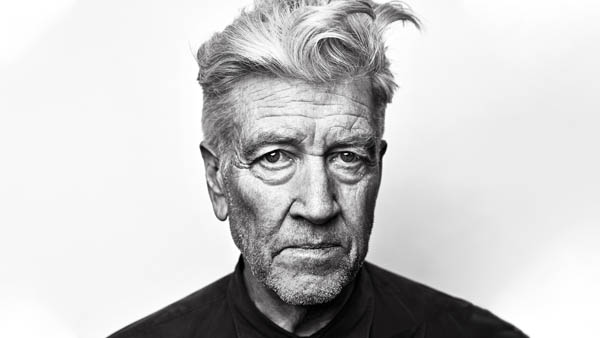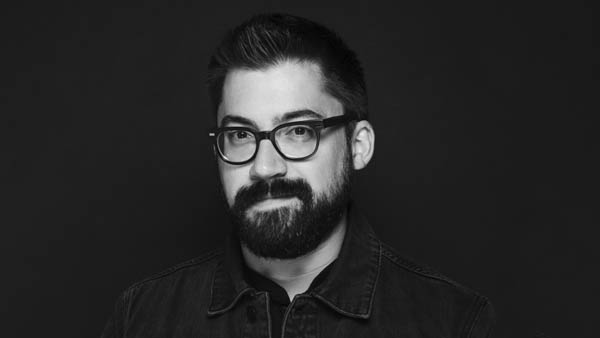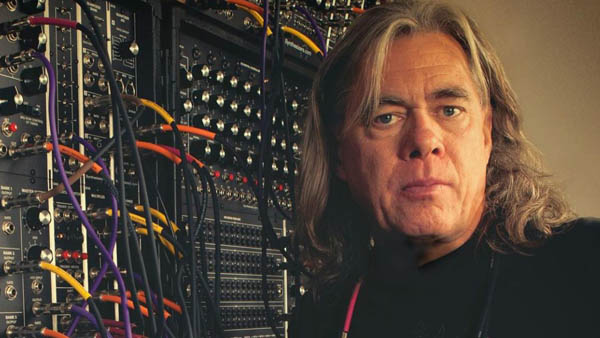Paola Antonelli
The Inaugural Buckman Series Interview
Check out our conversation with Paola Antonelli during her visit to the School of Design and Creative Technologies at The University of Texas at Austin.
Paola Antonelli: Well, to begin with, the city was Milan, so design was everywhere. And, what I always like to say is that it was not anything precious. Like if you needed a coffee pot, you went downstairs at the corner store and the coffee pot that you would buy would be something that was in museums all over the world. But because good design is normal and was normal. So, I grew up there and I also grew up thinking that architecture, design, objects, cities, buildings, were all one particular approach. So when I started architecture and there was no way to do anything practical because we were 15,000 students only in architecture, only in Milan, I came to understand that the theory of design is as important as the practice. And actually without a very strong theory, the practice becomes a little bit like, how can I say, just too limited and siloed. So, that university gave me the strength of doing what I do now, which is to look at design in many different forms across scales—physical, digital, sometimes public domain—although rare. So having this really open attitude towards design, I think that’s what really helped.
Nelda Studios: How did your path lead towards the MoMA? You’ve been there since 1994.
Paola Antonelli: I know it’s a long time. Completely by chance. What I like to tell people is that I never made a decision in my life except switching from economics to architecture. Cause I was studying economics before, but otherwise, I compare my career to surfing. So I’ve always been working hard paddling, going out and then waiting for the right wave without rationalizing it too much or calculating. It’s a matter of instinct of sorts. And then it’s a matter of like, once again, a little bit of instinct, courage and just feeling it, right? So, that’s what happened. And I never wanted to work in a museum. I had never worked in a museum before. I had never thought that I wanted to move to New York. I was in Milan and I was in Los Angeles. I was teaching at UCLA and going back and forth. And after three and a half years of going back and forth with 3,500 slides in my carry-on, I remember once thinking this is a little too much. And pretty much at that time, I opened a magazine, ID magazine, the US ID magazine, so Industrial Design magazine. And there was the ad for my position at MoMA. So I answered an ad
Every single moment of your life has an interaction with design.
Nelda Studios: Tell us about your current role at the MoMA.
Paola Antonelli: My current role is the same that I had in 1994, only with a few steps of titles, which is that of being the curator in charge of exhibitions and acquisitions in the collection of contemporary design. And when I say contemporary design, I mean anything from furniture to video games, to logos, to visualization design, to all sorts of different applications of design. And, we even have a 3D printed model of a virus that was created using a software. So it really is very, very broad. So I do that. And then I also am the kind of reference for the public when it comes to contemporary design. So the press calls in or the public. And then I’m also director of the R and D Department, and I’m proud of it.
And actually it’s the 10th anniversary this year. So the R and D department is a department that does a lot of R and very little D
Nelda Studios: Tell us a little bit more about the guiding principles when you’re curating for the MoMA.
Paola Antonelli: The guiding principles. The engine is always that of trying to explain to people how important design is, how absolutely fundamental an activity it is. Not only in using it, but also in creating it. I believe, strongly that design is the highest creative expression that we have. Because it is art. It is as difficult as art, but it’s even harder because there’s the reality check. It has to work. It has to not harm people possibly. It has to also not harm the environment too much. I mean, all of these different considerations make that exercise so, so hard. And that’s what I want to communicate to people. It’s an amazing field. It’s filled with creativity and with beauty and with elegance. Mistakes, successes. And I would like people to consider design the way they consider film or music. Right? Right. Now, people, when you say a director of photography, they understand what it is. When you say music producer, they know more or less what that person does. I would like them to become as literate of design, about design as they are of these other fields, because then their life would be much richer and more interesting.
Nelda Studios: That’s a really important point! You’ve said that design is basically infused into everything, from objects to how we live our lives, to how we behave. So what can we say to people about why it’s so important?
Paola Antonelli: Well, just every single moment of your life has an interaction with design. You go to the ATM machine, you’re dealing with an interface, design feat, good or bad, That’s what it is, that’s what you’re doing. You’re wearing your shoes—it’s fashion design, or it’s industrial design, but design, it is. You’re wearing your makeup, even the wand of the mascara is a particular design. You are taking the subway, you are moving around the city, somebody designed the city well or not well. So everything is designed and the moment you are able to consider design, appreciate it, and also understand when it’s not good enough, you become more demanding and you have more agency as a citizen.
Nelda Studios: So how do you go about the process of deciding what you’re going to focus on in your installations?
Paola Antonelli: It’s so hard. I mean, ideas are a dollar a pound and you know it very well being a producer, right? It’s the ones that you decide to produce that count, and that’s the toughest decision to make. Sometimes it’s guts. Other times you initiate an idea and it becomes an avalanche and it goes by itself. But you know, with exhibitions, sometimes you cannot react so quickly because, especially in an institution like MoMA, it might take years. The salons, I can react almost like in a month and a half when something is necessary, like we did a salon on breath in the middle of Covid. So it really is something that you can target better with exhibitions. Sometimes, it’s like a leap, you know? And, you hope that something will be as relevant two years from now as you think it is now.
Nelda Studios: Tell me about the salons. I’m curious about those.
Paola Antonelli: The salons are beautiful
Nelda Studios: I’d like to come for one of those.
Paola Antonelli: I know, they’re good. They’re online if you ever want to watch them.
Nelda Studios: You’ve often said that the difference between design and art is irrelevant. That design takes something revolutionary and makes it usable. What is the role of art?
Paola Antonelli: Well, art can have the same role, but I concern myself with designers. There are so many people that concern themselves with artists. So, you know what, they’re already taken care of. There are some artists, however, that really take my breath away and that I really consider as important to my life as so many designers. I would say that the biggest difference between designers and artists is that artists can choose whether to be responsible towards other people or not. And also artists are supported, or maybe in some cases limited by the gigantic market that they operate in. Designers are a little freer because they’re unencumbered by these kind of financial expectations, but at the same time they have a harder time being taken seriously. But truly, I like to look at design as the enabler of progress, like the enzyme for progress. I always think the classical example is the internet. It used to be lines of code until the designers of the mosaic interface came by, and then all of a sudden you had buttons and hyperlinks and windows and we could all use it, right? So it’s truly important. That’s one example, but there are many. They just incorporate positive, in many cases, behaviors into life. Even just the systems. Because designers sometimes design infrastructures that are not necessarily beautiful looking, but the infrastructure of recycling and waste management, those are acts of design. I was just recently in Singapore. The water system in Singapore is mindboggling, you know, how they reuse black waters and how they collect rainwater and how desalination are all brought together in one system. So once again, design comes in so many different aspects and forms and it really is wonderful to discover how amazing some of these projects are.
Nelda Studios: I’ve read that the founding mission of the MoMA was to reflect through art what’s going on in society, in modern society. So I want to talk about some of your installations that have garnered a lot of attention such as Broken Nature.
Paola Antonelli: Broken nature was even in that case, you know, when you were asking about the timeliness. I proposed it in 2013. It was not accepted at that time. And then I ended up doing it in 2018 in Milan. And it was just such perfect timing. So in a way it was good that it was not accepted right away because, you know, for instance, it was the time of Fridays for the Future, right? And, the kids that were marching would meet at the show and then start the march from there. So how wonderful is that? So Broken Nature was an exhibition that happened at The Triennale di Milano, which is a great building in Milan that was built for exhibitions of architecture and design. And it was about the environmental crisis, but it was trying to propose different strategies that we can all adopt to be more mindful and to steer the world in a positive direction.
And what was amazing, what was important about the strategies was that they were not about self-flagellation or atonement. So you could be responsible, you can be responsible towards the environment and other humans and other species without having to sacrifice the kind of elegance and pleasure and delight that one gets from great design. So it was about that, and that was the sunny part of the exhibition. The dark part of the exhibition was that it relied on the fact, on the certainty that we’re going to become extinct. And so we might design a better extinction for ourselves and for future species.
There is certainty that we’re going to become extinct. So we might as well design a better extinction for ourselves and for future species.
Nelda Studios: Tell us about some of the nature-focused exhibitions at the MoMA.
Paola Antonelli: There’s been more of a focus on nature in exhibitions of design, and I make that distinction because Broken Nature was about respecting nature, but it was not immediately about nature or material ecology, which is an exhibition of the work of Neri Oxman, that had some of her collaborations with animals and other entities. I mean, she’s been working a lot with silkworms, but it was not necessarily only about nature. That’s what is interesting. And you know why? Because we are nature, frankly, every exhibition is about nature. That’s one of the biggest problems that we have. Sometimes we think that as humans, it’s us and nature. No, we are part of nature. So what we do to nature we do to ourselves.
Nelda Studios: Tell us about the interactive design installations at the MoMA, especially the one that garnered so much attention—bringing video games as part of the permanent collection.
Paola Antonelli: Yeah. Well we started collecting video games in 2010 and we thought about it for a while. We prepared, we established the criteria, we decided what to acquire. How, because you know, when you acquire video games in a museum, you can’t just go out and buy the video game cuz there’s that little thing called E.U.L.A., the End User License Agreement, that we all agree to without reading it. And it says that the company can revoke the license at any time, which is not acceptable in a museum, right? It’s as if people could revoke the Picasso they gave, you know? So, it was really a beautiful system for acquisition. And to me it was just natural video games are an amazing example of interaction design. They are the art of our time. They are important. They are platforms that are the basis for so much more than just entertainment or escapism.
But for some weird reason, it provoked this gigantic reaction, reactions both positive and negative. And the negative reactions were so interesting because you understand what the attribute reactionary comes from, you know? And you know, I remember that one critic from the Guardian, I remember he was like, oh, Picasso and Pacman cannot be next to each other. And I was thinking, first of all, there’s three floors,
Nelda Studios: And yet, that kind of interface with technology is pervasive.
Paola Antonelli: It’s pervasive and it’s super important. But I guess they, the critics, were really terrified by this idea of video games as art. And, you know, I was collecting them as design, but even if they were considered art, I would be okay. They are in some cases. So, it’s fascinating, it’s prejudice.
Nelda Studios: Tell us about the design and violence exhibition.
Paola Antonelli: That is a project I’m so proud of. It was never an exhibition, at least it was not an exhibition that I curated. It actually happened as an exhibition, but at the science gallery in Dublin. And it was based on the project, but the idea came out of the 3D printed gun, when the files were released for the 3D printed gun many years ago. And I remember that I was really surprised. I was surprised by the 3D printed gun. And I then I was surprised by my reaction because I had always been thinking that design is such a positive force, but frankly, like anything, in the hands of humans, it can go either way, right? It can be used well or used badly. And of course there’s a lot of design that willy nilly has had a negative effect on the world and on other people.
So I started researching these objects that had an ambiguous relationship with violence, because ambiguity is important. Objects that are purely evil, yeah, what’s the point? But you know, just like the green bullets that were tested by armies all over the world, so bullets without lead, they’re gonna be good for nature, but they’re still gonna kill you. Right? Or, this speculative design, the suicide roller rollercoaster by a Lithuanian designer that had actually worked in Luna Parks. The idea that you can have these spirals in the rollercoaster that become tighter and tighter and tighter and deprive your brain of oxygen until you’re at the end of the coaster and you’re dead. It was speculative, of course. But these questions, the ambiguity, is euthanasia good or bad? And, what kind of application of responsibilities to say that something is good for the environment but still will kill you? So objects had become a way to explore the manifestations of violence in contemporary society. And I was doing it with a great colleague, Jamer Hunt. So it was a great website project that then became a book because MoMA wanted to do the book, and then my friends at the science gallery in Dublin did the exhibition.
Nelda Studios: It’s fascinating. You’ve often said that you get really excited about projects that allow you to discuss design and architecture as ways to be a better citizen of the world. Can you tell us about that?
Paola Antonelli: Ultimately, that’s what it is about, right? It’s about how you are in the world and it’s hard to read and to have perspective on your position in the world and it’s hard to have a reading of the systems that we live in. You know, you lose yourself. And I think that architecture and design can be ways to really get our bearings and have our compass. And you know, maybe because I grew up in Italy, but I believe that politics begins at the door of your family home, right? So we live in political spheres whenever, you know, policy is the city. So we’re in the city. So it’s very important to be citizens with agency, and design can definitely help us do that.
Nelda Studios: What do you have coming up that you’re excited about?
Paola Antonelli: Well, I have so much coming up right now, but I would say the continuation of Design Emergency is something that I’m very excited about. Design Emergency is a project that I started with my beloved friend Alice Rawsthorn, who’s an amazing design critic. And we did it when we were in lockdown. She’s in London and I’m in New York. And my husband was listening to Fat Joe, you know, the hip hop musician who was doing his Instagram lives every night with his friends. And so Alice and I started doing these Instagram lives with these designers that actually had a role in the pandemic, like the illustrators at the CDC that had branded the Coronavirus, because the Coronavirus is a gray blob. They’re the ones that made it into this deep water mine. So, that started specifically about the Coronavirus pandemic, and now it’s about how design can improve the world, can have really a positive effect. So that is super exciting.
And then I am working on an exhibition on the role of materials in contemporary design and the fact that it’s become so important to actually know where materials come from and where they’re going. The concept of embodied energy, which means that you calculate the energy that goes into an object by beginning from the source, from the mining and the extractions. So that’s super fascinating too. And then hopefully creatures, who knows, and there’s this proposal for this exhibition that argues that we should really look at everything animate and inanimate as having a soul. I don’t know if you’ll become, will it become another rejection? Who knows, inshallah (if God wills). But in the meantime, we keep trying.
Nelda Studios: What do you hope your legacy will be?
Paola Antonelli: Well, I hope that my legacy will be that of having really opened up people’s eyes to other forms of design than cute furniture
MORE ARTISTS AND CREATIVES











